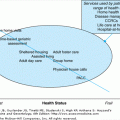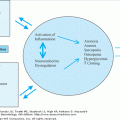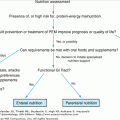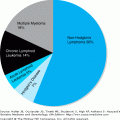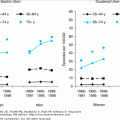Introduction
Among the mood disturbances, depression is the most frequent cause of emotional suffering in older adults. Depression decreases the quality of life of the elderly, increases functional decline, and, when severe, is associated with a shortened life expectancy. Bipolar disorder, although much less frequent, can be most burdensome to the elderly and a difficult management problem for the clinician. Therefore, the diagnosis and treatment of mood disorders are among the most important and challenging tasks facing the geriatrician and other health-care providers.
During the past few years, a significant effort has been generated to better understand these common and frequently disabling maladies. We have learned much about the causes of late-onset depression. The evidence base for therapy has increased dramatically for both major depression and bipolar disorder. This chapter begins by first exploring current case definitions. Next, both clinical and community-based epidemiological studies are examined so that the reader appreciates the burden of depression across multiple settings. This is followed by extant evidence that informs us of the origins of late-life depression from a biopsychosocial perspective. The chapter concludes with a review of current therapies for depressed older adults. These therapies range from medications and electroconvulsive therapy (ECT) to family interventions.
The Subtypes of Late-Life Mood Disorders
Although clinicians frequently disagree about exact case definitions of late-life mood disorders, the most cogent subtypes are presented below, subtypes relevant to clinical practice. Naturally, clinicians encounter frequent overlap of subtypes. For example, the acute and usually self-limiting episodes of major depression may be accompanied by chronic and less severe mood disturbances, such as dysthymia. In addition, the symptoms of late-life mood disorders often overlap with other psychiatric and physical disorders. Therefore, these case definitions or subtypes may be more useful for coding and communication than for actual patient care. These do remind the clinician, however, of the variation in symptom presentation and the necessity to tailor treatment strategies to the individual.
Major depression is the “bread and butter” diagnosis for moderate-to-severe, yet self-limited, mood disorders in late life. To be diagnosed with major depression according to the Diagnostic and Statistical Manual of Mental Disorders, fourth edition (DSM-IV), the older adult should exhibit most of the time for at least 2 weeks one or both of two core symptoms—depressed mood and/or lack of interest or pleasure in usual activities—along with four or more of the following symptoms: a feeling of worthlessness or inappropriate guilt, a diminished ability to concentrate or make decisions, fatigue, psychomotor agitation or retardation, insomnia or hypersomnia, significant decrease or increase in weight or appetite, and recurrent thoughts of death or suicide ideation. See Table 70-1 for a description of how the symptoms of major depression may vary with older adults compared to younger adults.
SYMPTOM | DESCRIPTION |
|---|---|
Depressed mood and/or lack of interest or pleasure in usual activities | The older adults may be more likely to express a loss of pleasure than to specifically complain of depression |
Feelings of worthlessness or inappropriate guilt | Less common in older adults than in younger adults |
Diminished ability to concentrate or make decisions | Often manifested as a complaint of memory problems—adults of all ages with moderate-to-severe depression complain of problems with concentration and memory, but depressed elders, in contrast to younger adults, exhibit impairment on psychological testing even when they do not have a comorbid dementing disorder |
Fatigue | Common regardless of age |
Psychomotor agitation or retardation | Older persons may exhibit either of these symptoms |
Insomnia or hypersomnia | Older persons rarely, if ever, exhibit hypersomnia—a symptom that is much more common in adolescence and young adults |
Significant decrease or increase in weight or appetite | Older adults rarely gain weight or experience an increase in appetite during a depressive episode |
Recurrent thoughts of death or suicidal ideation | Although thoughts of death are not uncommon in older adults, suicidal ideation among depressed elders is less frequent than among the depressed who are younger |
Although not a current diagnosis in DSM-IV, minor, subsyndromal, or subthreshold depression is a useful diagnosis for older adults with clear yet less severe depressive symptoms than those with major depression, and criteria are presented in the Appendix of DSM-IV. The diagnosis of minor/subsyndromal/subthreshold depression can be made in at least two ways. First, to meet criteria in DSM-IV, subjects must experience one of the core symptoms for major depression plus one to three additional symptoms. Another means by which the diagnosis of minor depression can be made is to administer a symptom screen for depression (such as the Center for Epidemiologic Studies Depression Scale). If the subject scores 16 or higher on this scale (a score that signifies clinically significant depressive symptoms) yet does not meet criteria for major depression, then the diagnosis of minor/subsyndromal/subthreshold depression can be made.
Dysthymic disorder is usually less severe than major depression but much longer lasting than either major depression or minor depression. To meet criteria for dysthymic, the older patients must experience moderate symptoms of depression for at least 2 years or longer. Although dysthymic disorder rarely has its onset in late life, it frequently persists from midlife into late life.
Depression in the elderly, as noted above, is often comorbid with both physical and psychiatric conditions, especially among the oldest old. Elders suffering from myocardial infarction and other cardiovascular conditions, diabetes, hip fracture, urinary incontinence, kidney disease, and stroke are more likely to suffer from depression than the general population of elders. When depression is comorbid with physical health problems, the clinician must distinguish between symptoms that are appropriate to the physical condition and those that either may be exaggerated or are not typical of the physical health problem. For example, an older person with cardiovascular disease may experience difficulty sleeping. If the sleep disturbance is to be considered a signal of depression, then the sleep problem should not simply represent the difficulty sleeping experienced by, for example, a person with shortness of breath or angina.
Depression is also frequently present among older adults with dementing disorders, such as Alzheimer’s disease and vascular dementia. The assessment of depressive symptoms in patients with dementia is problematic. One problem is the overlap between symptoms of depression and those that are the behavioral or emotional manifestations of the underlying dementia syndrome. For example, apathy and social withdrawal occur frequently in dementia and mild cognitive impairment. On the other hand, patients suffering from dementia are less likely to experience other symptoms, such as psychomotor agitation. Nevertheless, patients with dementia are no less likely to endorse a depressed mood. Given the frequency of depressive symptoms in Alzheimer’s disease, some investigators and clinicians have proposed a “depression of Alzheimer’s disease.” To meet criteria for this syndrome, patients must first be diagnosed with dementia of the Alzheimer’s type and exhibit at least three depressive symptoms such as depressed mood, anhedonia, social isolation, poor appetite, poor sleep, psychomotor changes, irritability, fatigue or loss of energy, feelings of worthlessness, and suicidal thoughts.
Episodes of major depression in late life can be of either early onset (that is, the first episode occurs before the age of 60 years and the current episode represents a relapse) or late onset (the first episode occurs after the age of 60 years). The symptoms of the depressive episode rarely differentiate early versus late onset. Nevertheless, a careful history may reveal factors that are associated with an earlier-onset disorder, such as long-standing personality disorder, a family history of psychiatric illness, or significant psychosocial stressors, such as a difficult employment history. One variant of late-onset depression is vascular depression, a subcategory of depression owing to vascular lesions in the brain. Vascular depression can be diagnosed only with the assistance of brain imaging. Nevertheless, elders experiencing this variant reveal more problems with verbal fluency, psychomotor speed, and especially executive cognitive functioning. Executive functioning is characterized by an ability to plan ahead, initiation, and perseveration.
Psychotic depression across the life cycle is much less frequent than nonpsychotic depression, yet is relatively more common in late life than earlier in life. For example, psychotic depression may be diagnosed in between 20% and 45% of hospitalized depressed elderly patients. Symptoms of late-life psychotic depression include a depression associated with delusions or hallucinations. These delusions or hallucinations may be “mood congruent” (delusions or hallucinations whose content is entirely consistent with the depressive themes of inadequacy, guilt, disease, death, and nihilism) or “mood incongruent” (the content of the delusions or hallucinations did not involve these depressive themes). As noted below, psychotic depression frequently will only respond to aggressive therapy such as electroconvulsive treatment.
Bipolar disorder is much less frequent than a unipolar major depression in late life. In addition, symptoms do not typically present with the classic cluster (i.e., hyperactivity, decreased sleep, flight of ideas, grandiose delusions, and hypersexuality). Mania may present with the predominant symptom of paranoia and fragmentation of ideas. A syndrome of reversible cognitive impairment, which appears much like an Alzheimer’s type of dementia, can also be seen. The symptoms include confusion, agitation, and incomprehensible loud verbalizations. Yet another presentation of bipolar disorder is irritability and anger without evidence of an elated affect. Finally, bipolar disorder may present as a “dysphoric mania.” These patients experience agitation and sleep problems but do not express feelings of elation or grandiosity but rather an uncomfortable “depressed” mood.
The Epidemiology of Late-Life Mood Disorders
The frequency of clinically significant depressive symptoms among community-dwelling older adults in most studies ranges from approximately 8% to 16%. Depressive symptoms may be more frequent among Latinos than among Caucasians and African-Americans. Major depression is more common among women compared to men, a difference that persists into late life. Depressive symptoms are more frequent among the oldest old, yet the higher frequency is generally explained by factors associated with aging, such as a higher proportion of women (women experience a higher frequency of depressive symptoms than men), increased physical disability, increased cognitive impairment, and lower social economic status. Overall, the frequency of depressive symptoms is no higher among older adults than among adults in young adulthood or midlife. Depressive symptoms, as assessed by usual screening instruments, are somewhat less frequent in African-Americans and more frequent among Latinos.
The prevalence estimates of major depression in the community are quite low, ranging from 1% to 4% overall with a higher prevalence among women, yet with no significant racial or ethnic differences. The frequency of bipolar disorder in community populations is low regardless of age (less than 0.5%). On psychiatry inpatient units, however, the frequency of mania in older adults may be as high as 5% overall and 9% of the persons having a mood disorder. Dysthymic disorder and minor depression are somewhat more frequent (4–6% for dysthymic disorder and 4% for minor depression). The frequency of major depression in hospitalized older adults on medical and surgical services usually ranges between 10% and 12%; in long-term care facilities between 10% and 15% experienced major depression. Between 5% and 10% of older adults visiting primary-care providers meet criteria for a diagnosis of major depression. Clinically significant depressive symptoms among hospitalized patients ranged between 20% and 25%, and as high as 35% of older adults in long-term care facilities experience the symptoms. Therefore, the burden of mood disorders is much higher in inpatient and long-term care facilities than found in the community.
The Outcome of Mood Disorders in Late Life
Data from a 6-year follow-up of community-dwelling elderly in the Netherlands estimate that approximately 23% of subjects diagnosed with major depression recovered and remained recovered, 44% experienced a fluctuating course, and 33% experienced persistent and moderate-to-severe depressive symptoms. Data from a long-term study of major depression in a clinical setting reveal similar results. Thirty-one percent recovered and remained well, 28% experienced at least one relapse but recovered, 23% recovered only partially, and 17% experienced persistent depressive symptoms throughout the 6 years of follow-up. Predictors of partial remission include comorbidity, major depression and dysthymia, poor social support, and functional limitations.
Many factors adversely influence the outcome of late-life depression. In turn, late-life mood disorders can complicate the course of comorbid problems. For example, depression is a major cause of weight loss in late life, and weight loss can adversely influence the outcome of many chronic medical illnesses. In turn, depression increased the risk for heart failure, a decrease in bone mineral density, and the prognosis of persons experiencing a myocardial infarction. Depression is also associated with disability over time. Disability is also a risk for depression. Physical disability among the depressed can lead to a higher number of negative events, the restriction of social leisure activities, isolation, and reduced quantity and quality of social support. Severe depression associated with cognitive decline, even if the cognitive impairment remits, is a risk for Alzheimer’s disease.
Nonsuicide mortality is a significant adverse outcome resulting from severe late-life depression. Both severity and duration of depressive symptoms increase the risk for mortality in elderly population studies. Even so, the causes of higher mortality rates in older adults may not be secondary to depressive symptoms themselves but rather factors associated both with depression and mortality, such as older age, medical comorbidity, smoking, and body mass index as well as chronic diseases and functional impairment.
Suicide frequency increases for white men, with peaks reaching rates as high as 62 per 100 000 in the 65 years and older age range. In contrast, suicide rates among elderly women are lower than for women in midlife. Persons attempting suicide are more likely to be widows (widowers), to live alone, to perceive their health status to be poor, to experienced poor sleep quality, to lack a confidante, and to experience stressful life events such as interpersonal problems in one’s marriage. Suicidal ideation is high among older adults, ranging from 5% to 10% (usually expressed as a wish to not live longer, not active suicidal intent).
Suicide rates in the United States have declined in recent years, reversing earlier trends. From 1987 to 2002, the rates among older persons declined from 21.7 to 15.6 per 100 000. This decline mirrors the lower rates in the 45 to 64 years age group documented during the late 1970s. These two declines suggest a so-called period effects rather than cohort effect. Namely, events during the 1970s and 1990s could be operating to buffer the negative impact of depression and other factors that may increase risk for suicide in the elderly. For example, the stock market created wealth and more economic security for many Americans during the 1990s. A more controversial explanation is that the introduction of selective serotonin reuptake inhibitors (SSRIs), prescribed to more than 10% of older adults in the United States may have reduced the burden of depression such that suicide rates decreased.
